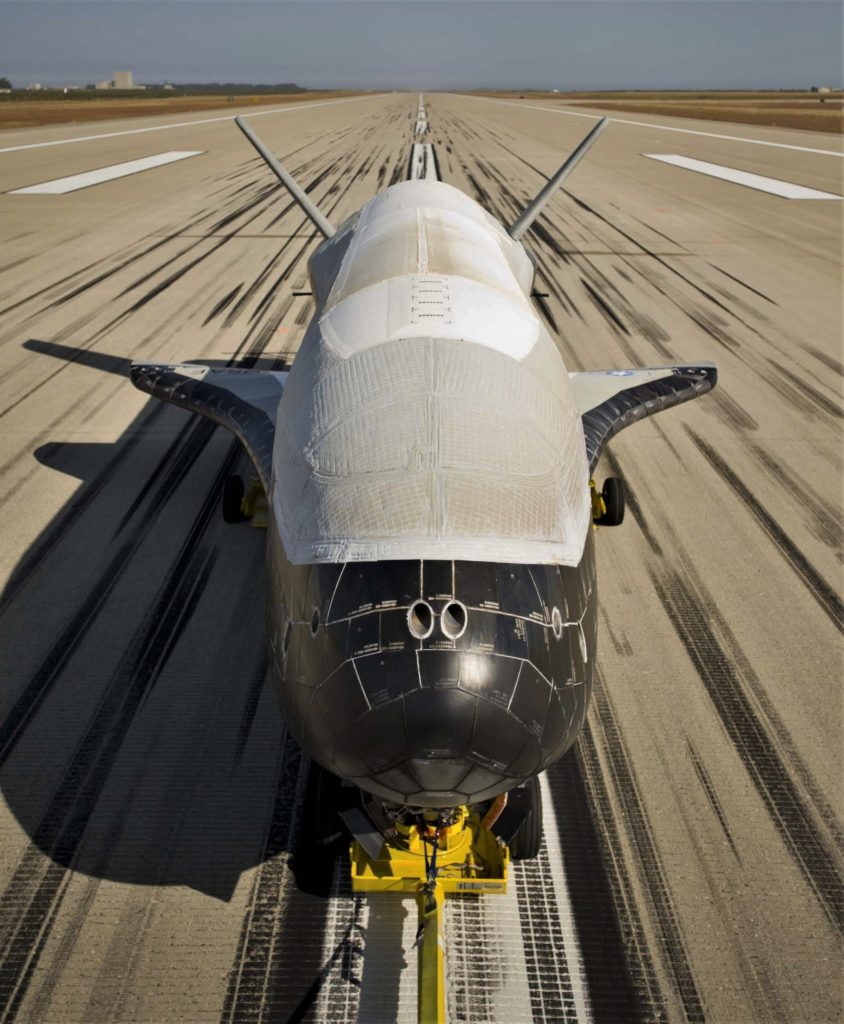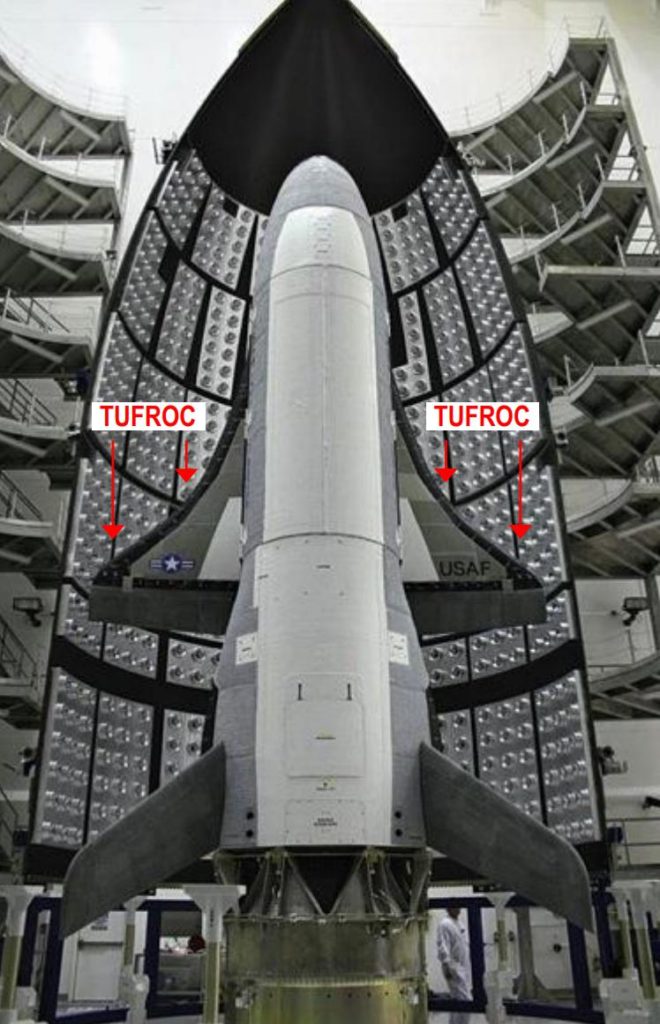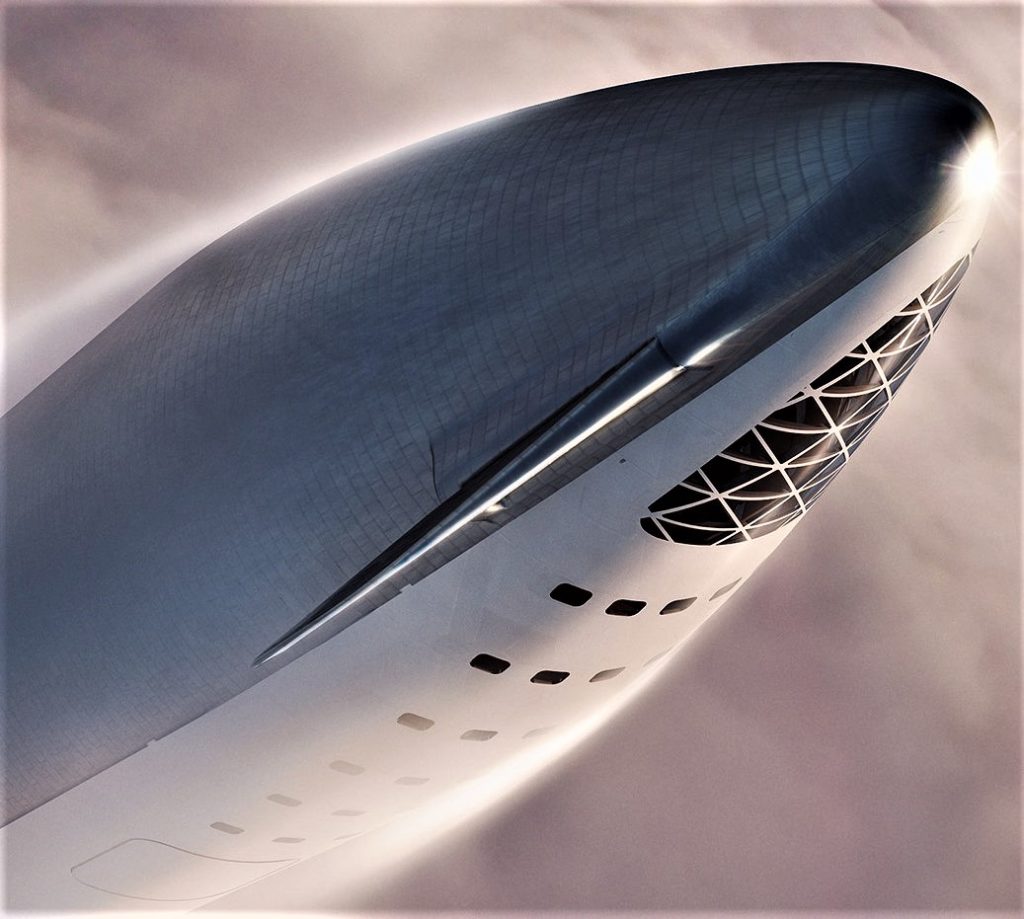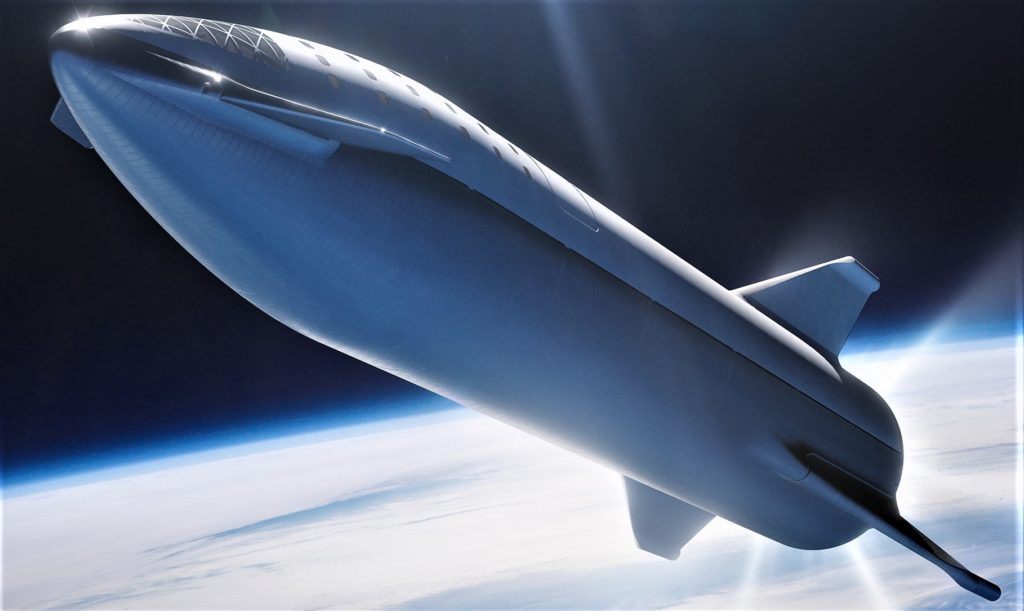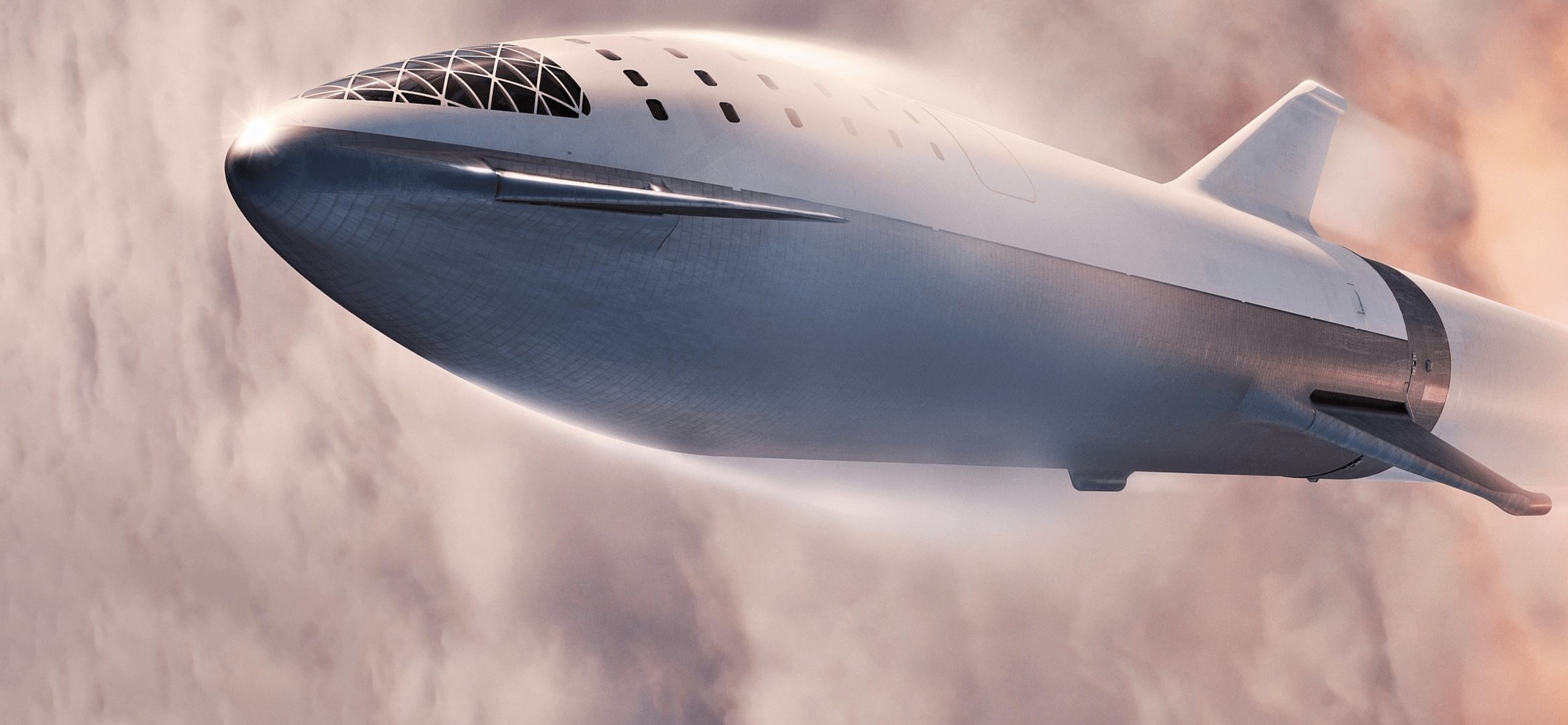

News
SpaceX’s BFR program pursuing advanced Starship heat shield with NASA help
According to a Space Act Agreement signed by SpaceX and NASA’s Ames Research Center in June 2018, the private company has begun working with NASA to acquire some basic experience and lessons-learned with a thermal protection (heat shield) material that is largely new to SpaceX.
Known as TUFROC (short for Toughened Uni-piece Fibrous Reinforced Oxidation-Resistant Composite), the NASA Ames-developed material is capable of withstanding temperatures as high as 1700 C (~3100 F) and is apparently an item of interest to SpaceX’s next-gen BFR (Starship/Super Heavy) rocket program, particularly Starship’s heat shield.
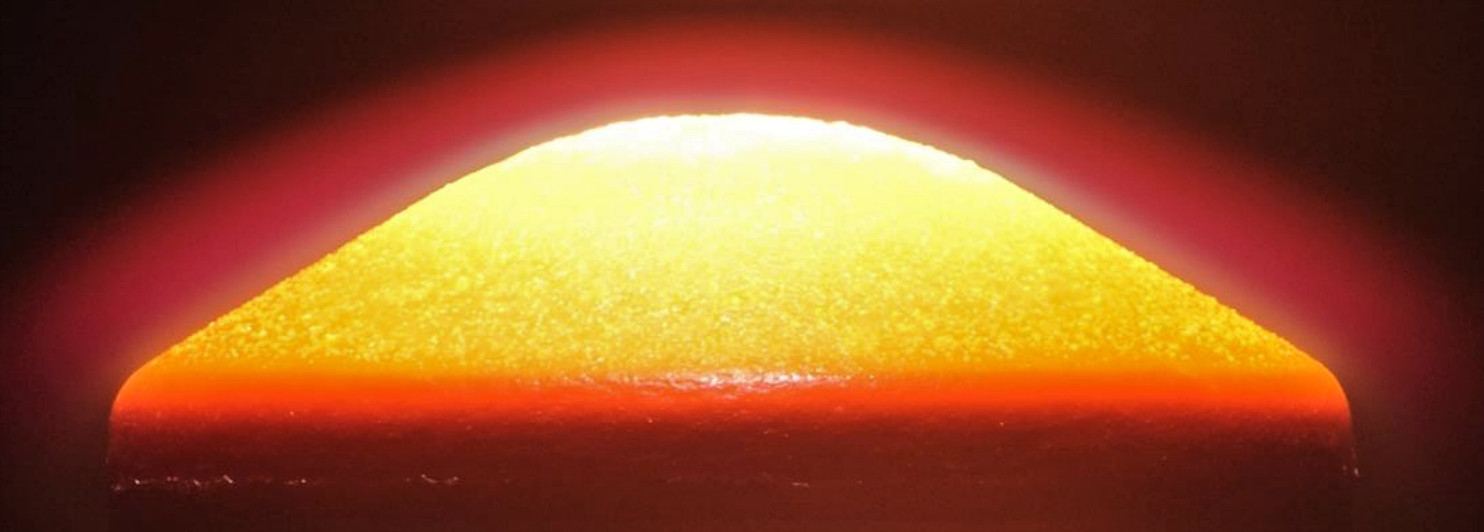
As far as the public is aware, SpaceX has never attempted to manufacture or utilize a heat shield technology like TUFROC. Falling under a domain of thermal protection materials known as ceramic matrix composites (CMCs), TUFROC is essentially an umbrella term that covers any thermal protection system that combines a carbon cap, silica base, and a cured glass coating to prevent oxidation. In recent years, Boeing’s secretive X-37B spaceplane has successfully demonstrated TUFROC reuse after orbital velocity reentries, confirming that the material is capable of surviving those conditions while experiencing minimal to no ablation.
Contour remains approx same, but fundamental materials change to airframe, tanks & heatshield
— Elon Musk (@elonmusk) November 25, 2018
Much like SpaceX borrowed the NASA-developed PICA (phenolic-impregnated carbon ablator) heat shield technology and dramatically improved it for cost-effective use on Cargo (and soon Crew) Dragon, the basic concept behind TUFROC’s heat shielding capabilities likely lends itself just as well to potential improvements in cost reduction, ease of manufacturing, mechanical strength, thermal protection characteristics, and more.
Unlike the fatally fragile carbon-carbon tiles used on the Space Shuttle, TUFROC’s namesake “Fibrous Reinforced” aspects also make it dramatically more resistant to impact related forces like those that led to the Columbia disaster, while still preserving the composite’s impressive heat resistance. NASA already categorizes TUFROC as a “low-cost” TPS, further indicating that SpaceX could quite easily cut the cost of production by a significant degree.
- Boeing’s X-37B spaceplane. (Boeing)
- A visualization of the location of X-37B’s limited TUFROC heat shielding. (NASA)
- A closeup of BFS’ nose section, featuring impressively varied tile-sizes, joining methods, and extremely precise curves on the interface between canard wings and the hull. (SpaceX)
- A view of BFS just after separating from its booster stage. (SpaceX)
What is not clear about this budding relationship is how exactly SpaceX foresees TUFROC or a custom heat shield derivative fitting into its BFR program. Currently, the TPS has only been demonstrated on X-37B as a literal edge-case, standing in for a more traditional silica tile on the leading edges of the small spacecraft’s wings, where reentry heating is often the most extreme. It’s possible that SpaceX is interested in TUFROC for the same reasons – using it to cover BFS/Starship’s forward and rear fins and nothing more.
However, it could be the case that SpaceX hopes an improved TUFROC-X might be viable as a monolithic one-size-fits-all heat shield material throughout BFR’s Super Heavy booster and Starship upper stage. Being forced to deal with a variety of different TPS materials inevitably raises the complexity and cost of a given spacecraft, so being able to significantly reduce the number of materials needed could be a boon for Starship.
NASA and SpaceX’s Space Act Agreement can be found here [PDF].
For prompt updates, on-the-ground perspectives, and unique glimpses of SpaceX’s rocket recovery fleet check out our brand new LaunchPad and LandingZone newsletters!
News
Tesla cleared in Canada EV rebate investigation
Tesla has been cleared in an investigation into the company’s staggering number of EV rebate claims in Canada in January.

Canadian officials have cleared Tesla following an investigation into a large number of claims submitted to the country’s electric vehicle (EV) rebates earlier this year.
Transport Canada has ruled that there was no evidence of fraud after Tesla submitted 8,653 EV rebate claims for the country’s Incentives for Zero-Emission Vehicles (iZEV) program, as detailed in a report on Friday from The Globe and Mail. Despite the huge number of claims, Canadian authorities have found that the figure represented vehicles that had been delivered prior to the submission deadline for the program.
According to Transport Minister Chrystia Freeland, the claims “were determined to legitimately represent cars sold before January 12,” which was the final day for OEMs to submit these claims before the government suspended the program.
Upon initial reporting of the Tesla claims submitted in January, it was estimated that they were valued at around $43 million. In March, Freeland and Transport Canada opened the investigation into Tesla, noting that they would be freezing the rebate payments until the claims were found to be valid.
READ MORE ON ELECTRIC VEHICLES: EVs getting cleaner more quickly than expected in Europe: study
Huw Williams, Canadian Automobile Dealers Association Public Affairs Director, accepted the results of the investigation, while also questioning how Tesla knew to submit the claims that weekend, just before the program ran out.
“I think there’s a larger question as to how Tesla knew to run those through on that weekend,” Williams said. “It doesn’t appear to me that we have an investigation into any communication between Transport Canada and Tesla, between officials who may have shared information inappropriately.”
Tesla sales have been down in Canada for the first half of this year, amidst turmoil between the country and the Trump administration’s tariffs. Although Elon Musk has since stepped back from his role with the administration, a number of companies and officials in Canada were calling for a boycott of Tesla’s vehicles earlier this year, due in part to his association with Trump.
News
Tesla Semis to get 18 new Megachargers at this PepsiCo plant
PepsiCo is set to add more Tesla Semi Megachargers, this time at a facility in North Carolina.

Tesla partner PepsiCo is set to build new Semi charging stations at one of its manufacturing sites, as revealed in new permitting plans shared this week.
On Friday, Tesla charging station scout MarcoRP shared plans on X for 18 Semi Megacharging stalls at PepsiCo’s facility in Charlotte, North Carolina, coming as the latest update plans for the company’s increasingly electrified fleet. The stalls are set to be built side by side, along with three Tesla Megapack grid-scale battery systems.
The plans also note the faster charging speeds for the chargers, which can charge the Class 8 Semi at speeds of up to 1MW. Tesla says that the speed can charge the Semi back to roughly 70 percent in around 30 minutes.
You can see the site plans for the PepsiCo North Carolina Megacharger below.

Credit: PepsiCo (via MarcoRPi1 on X)

Credit: PepsiCo (via MarcoRPi1 on X)
READ MORE ON THE TESLA SEMI: Tesla to build Semi Megacharger station in Southern California
PepsiCo’s Tesla Semi fleet, other Megachargers, and initial tests and deliveries
PepsiCo was the first external customer to take delivery of Tesla’s Semis back in 2023, starting with just an initial order of 15. Since then, the company has continued to expand the fleet, recently taking delivery of an additional 50 units in California. The PepsiCo fleet was up to around 86 units as of last year, according to statements from Semi Senior Manager Dan Priestley.
Additionally, the company has similar Megachargers at its facilities in Modesto, Sacramento, and Fresno, California, and Tesla also submitted plans for approval to build 12 new Megacharging stalls in Los Angeles County.
Over the past couple of years, Tesla has also been delivering the electric Class 8 units to a number of other companies for pilot programs, and Priestley shared some results from PepsiCo’s initial Semi tests last year. Notably, the executive spoke with a handful of PepsiCo workers who said they really liked the Semi and wouldn’t plan on going back to diesel trucks.
The company is also nearing completion of a higher-volume Semi plant at its Gigafactory in Nevada, which is expected to eventually have an annual production capacity of 50,000 Semi units.
Tesla executive teases plan to further electrify supply chain
News
Tesla sales soar in Norway with new Model Y leading the charge
Tesla recorded a 54% year-over-year jump in new vehicle registrations in June.

Tesla is seeing strong momentum in Norway, with sales of the new Model Y helping the company maintain dominance in one of the world’s most electric vehicle-friendly markets.
Model Y upgrades and consumer preferences
According to the Norwegian Road Federation (OFV), Tesla recorded a 54% year-over-year jump in new vehicle registrations in June. The Model Y led the charge, posting a 115% increase compared to the same period last year. Tesla Norway’s growth was even more notable in May, with sales surging a whopping 213%, as noted in a CNBC report.
Christina Bu, secretary general of the Norwegian EV Association (NEVA), stated that Tesla’s strong market performance was partly due to the updated Model Y, which is really just a good car, period.
“I think it just has to do with the fact that they deliver a car which has quite a lot of value for money and is what Norwegians need. What Norwegians need, a large luggage space, all wheel drive, and a tow hitch, high ground clearance as well. In addition, quite good digital solutions which people have gotten used to, and also a charging network,” she said.
Tesla in Europe
Tesla’s success in Norway is supported by long-standing government incentives for EV adoption, including exemptions from VAT, road toll discounts, and access to bus lanes. Public and home charging infrastructure is also widely available, making the EV ownership experience in the country very convenient.
Tesla’s performance in Europe is still a mixed bag, with markets like Germany and France still seeing declines in recent months. In areas such as Norway, Spain, and Portugal, however, Tesla’s new car registrations are rising. Spain’s sales rose 61% and Portugal’s sales rose 7% last month. This suggests that regional demand may be stabilizing or rebounding in pockets of Europe.
-

 Elon Musk2 weeks ago
Elon Musk2 weeks agoTesla investors will be shocked by Jim Cramer’s latest assessment
-

 Elon Musk2 days ago
Elon Musk2 days agoxAI launches Grok 4 with new $300/month SuperGrok Heavy subscription
-

 Elon Musk4 days ago
Elon Musk4 days agoElon Musk confirms Grok 4 launch on July 9 with livestream event
-

 News1 week ago
News1 week agoTesla Model 3 ranks as the safest new car in Europe for 2025, per Euro NCAP tests
-

 Elon Musk2 weeks ago
Elon Musk2 weeks agoA Tesla just delivered itself to a customer autonomously, Elon Musk confirms
-

 Elon Musk1 week ago
Elon Musk1 week agoxAI’s Memphis data center receives air permit despite community criticism
-

 News2 weeks ago
News2 weeks agoXiaomi CEO congratulates Tesla on first FSD delivery: “We have to continue learning!”
-

 News2 weeks ago
News2 weeks agoTesla sees explosive sales growth in UK, Spain, and Netherlands in June

